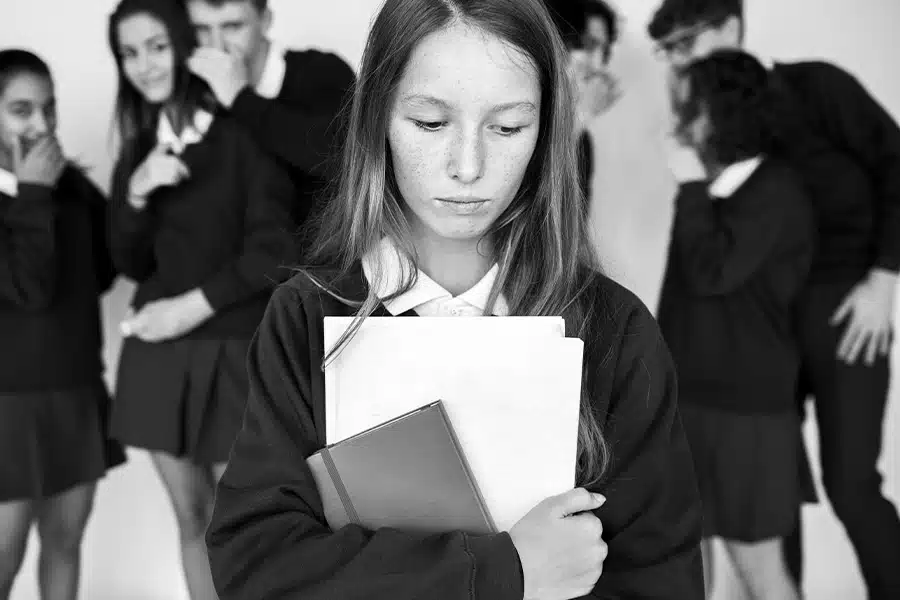CULTIVATING POSITIVE EMOTIONS IN THE CLASSROOM
Strategies for Educators

Every classroom is a dynamic environment brimming with potential. Within these walls, young minds are shaped, nurtured, and inspired. To truly unlock this potential, fostering positive emotions is paramount.
Barbara Fredrickson, a leading figure in positive psychology, identified ten core positive emotions: joy, gratitude, serenity, interest, hope, pride, amusement, inspiration, awe, and love. These emotions not only enhance the learning experience but also contribute significantly to students’ overall well-being.
Positive emotions drive flourishing and are essential for mental health and well-being. According to Fredrickson’s Broaden and Build Theory, positive emotions broaden our awareness and encourage novel, varied, and exploratory thoughts and actions. This broadened behavioural repertoire builds skills and resources that contribute to our overall resilience and success. By focusing on positive emotions, educators can help students develop the psychological, cognitive, and social resources needed to get the monkeys off their backs —those stressors, anxieties, distractions, burdens, and limiting beliefs that weigh them down—and keep them away.
So, if you’re an educator, what can you do to transform your classroom into a powerhouse of positivity?
Here are five practical strategies that you can implement to cultivate positive emotions in the classroom:
1) BUILD BRIDGES: CONNECT WITH STUDENTS TO TAME THE MONKEYS OF ISOLATION & DISRUPTION
Positive relationships between teachers and students are crucial for cultivating positive emotions. When students feel connected to their teachers, they are more likely to feel valued and motivated. In my previous article, I discussed strategies to foster open communication and connection with young people. Keeping lines of communication open and creating a safe space for dialogue are crucial in encouraging them to share thoughts and emotions without fear of judgment.
Students may struggle with trust issues or feel disconnected due to past negative experiences with authority figures. Building strong relationships requires time and consistent effort.
When I was struggling during high school, several teachers wrote me off and labelled me as a student with ‘no hope’, betting I wouldn’t make it past Year 10. I ended up finishing Year 12 and was included in the HSC merit listing for outstanding academic results. While hard work and determination played a big part, it was the care and attention of not only my parents but also my teacher, Mr. Walker, that made a significant difference. Mr. Walker started teaching in the year I made the turnaround. We had no history, starting with a blank canvas, and he took me from being a struggling and disengaged student to being a high performer by the time I signed off, defying the odds.
Mr. Walker’s belief in me, his consistent support, and his ability to connect with me on a personal level were instrumental in helping me shift my narrative, ignite connection and positive emotions, and unlock my potential. The moral of the story? Every single student has issues and struggles, but also within them have seeds of abundant potential. It is our responsibility as educators and parents to believe in them and feed them with the optimism and empowerment that will unlock that potential. When this happens, the young person can feel ‘the love’, and watch them soar, like I did.
Practical suggestions for YOUNGER STUDENTS:
- Personal Check-Ins: Start each day with personal check-ins where students can share their feelings. Use a “feelings chart” where students can place their name next to an emotion they are experiencing.
- One-on-One Time: Schedule regular one-on-one time with each student to discuss their goals, interests, and concerns. This can be a few minutes during recess or a scheduled meeting during a free period.
- Positive Affirmations: Make it a habit to provide positive affirmations and specific praise. For example, instead of saying “good job,” say “I am really impressed with how you solved that problem. Your perseverance paid off.”
Practical suggestions for OLDER STUDENTS:
- Personal Check-Ins: Start each week with personal check-ins where students can share their feelings. Use tools like mood meters or anonymous surveys to understand the emotional climate of the class.
- Mentorship Programs: Establish mentorship programs where teachers provide guidance and support to students. Regularly scheduled meetings can help address academic and personal concerns.
- Specific Praise: Provide specific and genuine praise. For example, instead of generic compliments, acknowledge specific efforts and achievements, such as “Your analysis in the essay was insightful and showed great depth of thought.”
“A good teacher can inspire hope, ignite the imagination and instill a love of learning.”
(Brad Henry)
2) CREATE A SANCTUARY: KEEP THE MONKEYS OF FEAR & JUDGMENT AWAY
The foundation of positive emotions in the classroom starts with creating a safe and inclusive environment where every student feels valued and respected.
Students often face anxiety and fear of judgment, which can hinder their participation and engagement. They might feel isolated due to cultural, social, or personal differences.
Practical suggestions for YOUNGER STUDENTS:
- Classroom Agreements: Collaboratively create classroom agreements that promote respect, kindness, and inclusivity. Engage students in this process to foster a sense of ownership and community.
- Celebrating Diversity: Integrate multicultural literature and activities that highlight diverse perspectives. For example, organise cultural exchange days where students can share their traditions and experiences.
- Safe Spaces: Designate a safe space in the classroom where students can retreat when feeling overwhelmed. Equip this space with calming tools like stress balls, colouring books, and comfortable seating.
Practical suggestions for OLDER STUDENTS:
- Classroom Norms: Develop classroom norms that emphasise respect, kindness, and inclusivity. Encourage students to contribute to these norms, fostering a sense of ownership and mutual respect.
- Celebrating Diversity: Incorporate discussions, projects, and assignments that highlight diverse perspectives. For example, assign projects that explore different cultural backgrounds or current global issues, encouraging students to present and discuss their findings.
- Supportive Spaces: Create supportive spaces where students can seek help or take a break when feeling overwhelmed. This could be a designated area in the classroom or a policy allowing short breaks for mindfulness exercises or brief check-ins with a trusted teacher or counsellor.
“A person is a person, no matter how small.”
(Dr Seuss)
3) MANAGE EMOTIONS: GUIDE STUDENTS TO MANAGE THE MONKEYS WITHIN
Helping students become comfortable with their emotions and develop emotional regulation skills is essential for their well-being.
Students often struggle with identifying and expressing their emotions, leading to frustration and behavioural issues. They may lack the skills to manage their emotions effectively.
Practical suggestions for YOUNGER STUDENTS:
- Feelings Journal: Encourage students to keep a feelings journal where they can write or draw about their emotions. This helps them process their feelings and recognise patterns.
- Mindfulness Practices: Incorporate mindfulness exercises into the daily routine. For example, start the day with a short meditation or breathing exercise to help students centre themselves.
- Role-Playing Scenarios: Use role-playing activities to teach students how to handle different emotional situations. For instance, practise scenarios where they need to use calming techniques when feeling angry or anxious.
Practical suggestions for OLDER STUDENTS:
- Emotional Literacy Workshops: Conduct workshops that focus on emotional literacy, helping students understand and articulate their feelings. These can include activities like role-playing and group discussions.
- Mindfulness and Relaxation Techniques: Integrate mindfulness exercises and relaxation techniques into the school day. For example, start or end classes with a brief mindfulness session or breathing exercise.
- Conflict Resolution Training: Provide training in conflict resolution and emotional regulation techniques. This can help students handle interpersonal conflicts and stress more effectively.
“Feelings are much like waves. We can’t stop them from coming, but we can choose which one to surf”
(Jonatan Martensson)
4) UNITE AS ONE: FOSTER PEER SUPPORT TO BANISH THE MONKEY OF UNKINDNESS
Positive peer relationships contribute significantly to the overall emotional climate of the classroom. Encouraging collaboration and empathy among students helps build a supportive community.
Students may encounter conflicts, bullying, or social anxiety that affects their ability to form positive relationships with peers.
Practical suggestions for YOUNGER STUDENTS:
- Buddy Systems: Implement a buddy system where students are paired with a classmate to support each other. This can be particularly helpful for new students or those who struggle with social interactions.
- Group Projects: Assign group projects that require collaboration and teamwork. Ensure that each group has diverse members to promote inclusivity and mutual respect.
- Peer Recognition: Create opportunities for students to recognise and celebrate each other’s achievements. For example, have a “kindness wall” where students can post notes of appreciation for their peers.
Practical suggestions for OLDER STUDENTS:
- Peer Support Programs: Implement peer support programs where students can provide guidance and support to each other. This could include peer tutoring, mentorship, or conflict mediation roles.
- Collaborative Projects: Design collaborative projects that require teamwork and cooperation. Ensure that each group is diverse to promote inclusivity and mutual respect.
- Peer Recognition: Create opportunities for students to recognise and celebrate each other’s achievements. For example, have a “shout-out board” where students can post notes of appreciation for their peers.
“The strength of the team is each individual member. The strength of each member is the team”
(Phil Jackson)
5) SPARK JOY: ENGAGE STUDENTS TO CHASE AWAY THE MONKEYS OF BOREDOM & APATHY
Learning should be an enjoyable and exciting experience. Integrating activities that spark joy and curiosity can enhance positive emotions and engagement.
Traditional teaching methods may sometimes feel monotonous or disconnected from students’ interests, leading to disengagement and lack of enthusiasm.
Practical suggestions for YOUNGER STUDENTS:
- Gamified Learning: Incorporate educational games and challenges into your lessons. For example, use a quiz game to review material or a scavenger hunt to explore new concepts.
- Creative Arts: Use art, music, and drama to make learning more interactive and fun. For instance, have students create a mural that represents a theme you are studying or write a song about a historical event.
- Celebration of Success: Regularly celebrate academic and personal achievements. Host “celebration days” where students can showcase their work, talents, and progress.
Practical suggestions for OLDER STUDENTS:
- Project-Based Learning: Implement project-based learning where students can explore topics they are passionate about. For example, allow students to choose their projects within a given framework, fostering autonomy and interest.
- Interactive Technology: Use interactive technology and multimedia resources to make lessons more engaging. For instance, incorporate educational apps, virtual reality experiences, or online collaborative tools.
- Celebration of Achievements: Regularly celebrate both academic and personal achievements. Host “celebration days” where students can present their projects, share their talents, and reflect on their progress.
“Education is not the filling of a pail, but the lighting of a fire.”
(William Butler Yeats)
To conclude, cultivating positive emotions in the classroom is not just about creating a happy atmosphere; it’s about empowering students to thrive emotionally, socially, and academically. By implementing these five practical strategies, educators can transform their classrooms into vibrant, supportive, and joyful learning environments.
Remember, every student faces their own set of “monkeys” or challenges that can weigh them down. As educators, you have the power to help them get those monkeys off their backs and create a pathway to resilience, success, and well-being.
I’ll leave you with the inspiring words of Barbara Fredrickson:
“Positivity doesn’t just change the contents of your mind. It widens the possibilities that you see”
(Barbara Fredrickson)
By fostering positive emotions, you are not only enhancing the learning experience and contributing to the development of well-rounded, emotionally intelligent, and resilient individuals, but also expanding their vision of ‘what could be,’ setting them up to realise their full potential.











